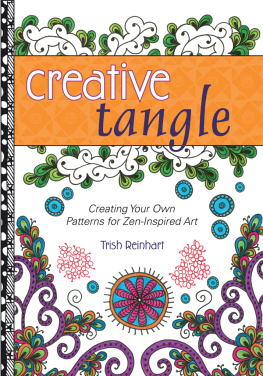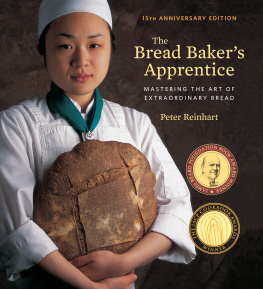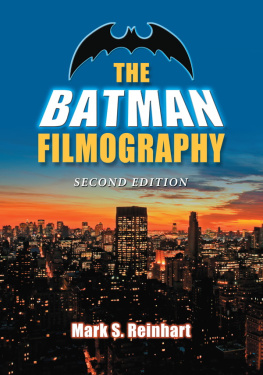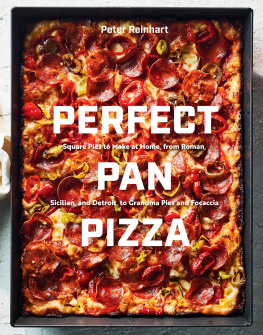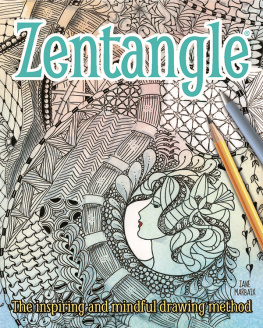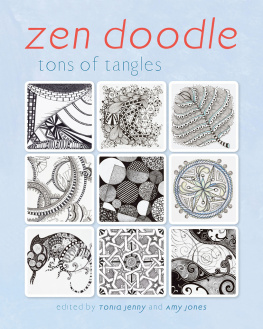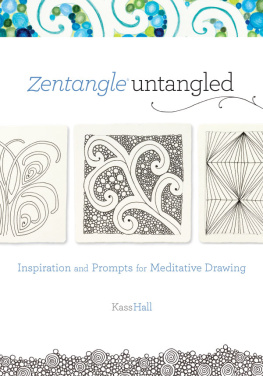Thank you for purchasing this Artist Network eBook.
Sign up for our newsletter and receive special offers, access to free content, and information on the latest new releases and must-have art resources! Plus, receive a coupon code to use on your first purchase from NorthLightShop.com for signing up.
or visit us online to sign up at
http://artistsnetwork.com/ebook-promo
Creative Tangle
Creating Your Own Patterns for Zen-Inspired Art
Trish Reinhart
CINCINNATI, OHIO
createmixedmedia.com
Contents
Dedication
To my husband, Kevin, who helps me believe all things are possible.
To my daughter, Jenna, for being an endless source of inspiration.
To my family and friends, for your love and encouragement.
What You Need
Surfaces
- 70-lb. (150gsm) Strathmore drawing paper [or 50lb. (105gsm)]
- Cardstock (various colors)
- Cold-pressed illustration board
- Strathmore bristol board
- Watercolor paper
Pens
- Pbo Vitrea 160-series glass paint markers
- Sakura Gelly Roll pen, white
- Sakura Pigma Micron pens, black: .01, .03, .05, .08; red: .05, .08; blue: .05
- Sharpie Oil-Based Paint Markers
- Sharpie Permanent Markers
- Tombow Dual Brush Pens (055 Process Yellow, 158 Dark Olive, 173 Willow Green, 373 Sea Blue, 452 Process Blue, 493 Reflex Blue, 665 Purple, 725 Rhodamine Red, 933 Orange, 992 Sand Brown)
Pencils
- 2B, 4B, 6B pencils
- Derwent Inktense watercolor pencils
- No. 2 pencil
- Prismacolor colored pencils
Other Supplies
- 18-gauge wire
- Acid-free glue stick
- Acrylic craft paint
- Assorted ephemera, collage sheets, stickers
- Blending stump
- Cardboard
- Childrens shoes
- Collage sheet
- Cotton swabs
- Craft knife
- Crystal lacquer (Sakura 3D Crystal Lacquer)
- Deck of playing cards
- Decorative stamps
- Double-sided tape
- Duct tape
- E-6000 adhesive
- Fine-grit sandpaper
- Glass paperweights
- Glass tile
- Grosgrain ribbon
- Heat gun
- Hot glue gun with glue sticks
- Iron-on transfer
- Jewelry supplies
- Key ring
- Kilz primer
- Kneaded eraser
- Magnet strips
- Mod Podge, matte finish
- No. 10 watercolor brush
- No. 12 round watercolor brush
- Painters tape
- Permanent ink pads, various colors
- Photo coasters
- Photo frame
- Poly fiberfill
- Polymer clay (Sculpey III)
- Polymer clay sealer
- Premo! Scupley Shapelets Classic Design Shapes
- Protractor
- Ruler
- Scissors
- Scrapbook paper
- Sculpey clay cutting, rolling, and piercing tools
- Sewing materials
- Small scissors for paper crafting
- Spiral-bound, hardcover journal
- Straightedge
- Templates
- Terra-cotta pots
- Watercolor paints
- White gesso
- Wine bottle holder
- Wine glass
- Wrapping paper
Introduction
I stumbled across Zentangle quite by accident. Like many other crafters, I was in the midst of researching material on the Internet. My attention was diverted to a link on the side of the screen, directing me toward some unusual design form that I had never seen before. Being the curious-minded person that I am, I proceeded to the link and discovered one of the best finds of the crafting industry in the last ten years. This little gem had staying power, and I immediately wanted to learn all I could about it.
Rick Roberts and Maria Thomas are the two genius minds behind creating this unique art form. They discovered the calming effects of drawing simple, repetitive patterns on paper, a drawing technique that unlocks creativity and provides medicinal benefits. It is also simple to learn, requires few materials, and can be done anywhere on a multitude of surfaces.
I should first tell you what this book is not. It isnt a beginners introduction to Zentangle basics. If you are a beginner, I implore you to first check out the series of books written by Suzanne McNeill or Sandy Steen Bartholomew. Both are Certified Zentangle Teachers (CZTs). When I first discovered Zentangle, theirs were among the few books on the market that covered that subject matter. They provide all the basic information youll need to begin your creative journey into the world of Zentangle. The dozens and dozens of patterns showcased in all the books are meant as samples for you to study from and then incorporate into your own designs on paper. As with any skill, you need to start with the basics before you can master the craft. This series of books is the best place to start. You may also further explore the origins of Zentangle by visiting the founders website at Zentangle.com.
With the above in mind, this book will help you take your Zentangles to the next level. Ive written from an artists point of view so that I could expand on some basic design principles necessary to creating your own patterns. There will be helpful tips on avoiding common mishaps through improper use of materials as well as advice on making your layouts stand out. Once you incorporate these principles on paper, you will then be guided to a gallery of applications to showcase your designs. My goal is to get everyone to think like an artist because, if you havent looked in the mirror lately, you already are one!
ZENTANGLE WORLD
Pen and marker on bristol board
11" 8 12" (28cm 22cm)
Zentangle and the Great Brain Divide
Betty Edwardss ground-breaking book Drawing on the Right Side of the Brain brought to light that we tend to be a very logical or left-brain society, using only a small portion of the creative right side of our brains.
The beauty of Zentangle is that it speaks to both sides of the brain. The repetitive patterns take on a rhythm and logic that is familiar to the left side of the brain, but its only when we let the right side open up and take over that the pieces or quadrants come together to form the end design.
Some of the Zentangle applications in may require a bit more artistic ability. For left-brain enthusiasts, I urge you to try the upside-down picture exercise. Turn the image upside-down to force the right side of your brain into action, allowing you to focus on the shapes and lines for a more accurate drawing. You may surprise yourself by unlocking drawing skills you never thought you had. Exercising the right side of the brain will take your designs to the limits of your imagination.

